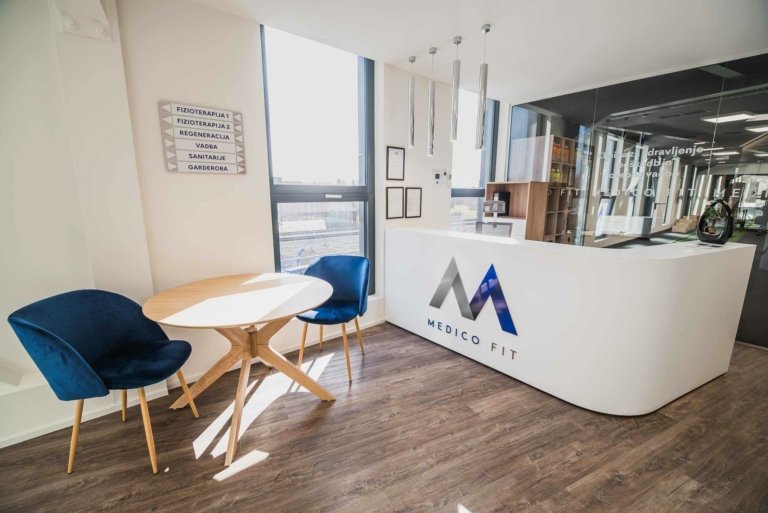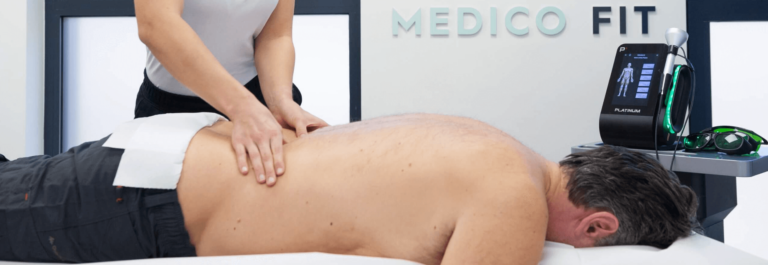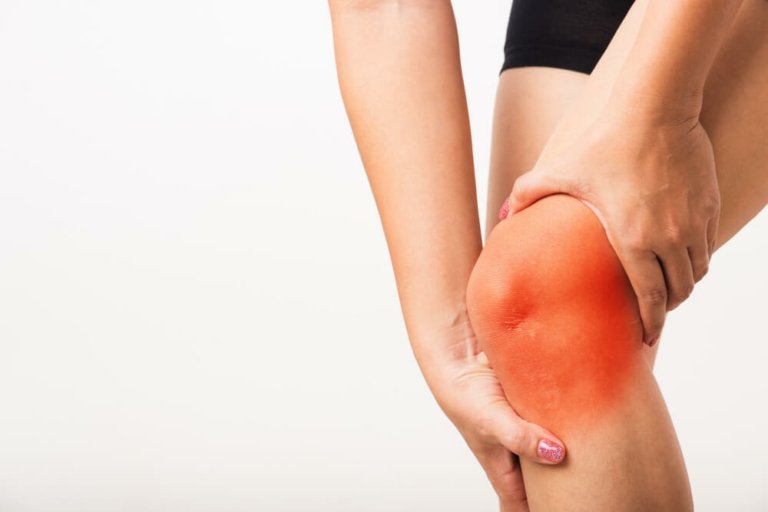There is more and more scientific evidence that confirms how important physical activity and related physical fitness are for improving an individual’s health. Movement is truly one of the best “medicines” for the human body. We can probably all agree with the statement that sufficient physical activity is important for maintaining a healthy lifestyle.
However, the majority of adults in the Western world are not physically active enough, which means that they do not meet international recommendations regarding the sufficient amount and intensity of daily physical activity. Because of technological evolution, we are dealing with an increased proportion of people who spend most of their waking hours in a sitting position.
A sedentary lifestyle causes insufficient muscle strength and reduced aerobic endurance, which results in a high prevalence of musculoskeletal diseases among other things. In Europe, as much as 40% of all occupational diseases are musculoskeletal defects. The latter, on the one hand, have negative effects on the individual, because they reduce their quality of life, and on the other hand, they are also an economic problem, due to increased sick leave at work and increased need for medical care (5).
We wish that as a society in the future, with the help of systemic changes, we would strive to improve living and working conditions, and that these would support the individual in choosing a healthier lifestyle. But just sitting and waiting unfortunately does not bring anything good for the individual. Therefore, we can start today, at least with small changes. So that our today will be less sedentary, more physically active, and our tomorrow will therefore include less pain and better overall well-being.
Daily sitting time and COVID-19 correlation
Daily sitting time increased by 28% during the COVID-19 pandemic!
Sedentary behavior is an umbrella term that includes sitting at work or in school, as well as sitting while using transport, sitting during leisure time while watching TV, reading a book, etc. Data from 168 countries in 2018 showed that as much as 27.5% of the adult population was not sufficiently physically active (6). Of further concern is the fact that physical activity levels have decreased by more than 20% during the COVID-19 pandemic and that daily sitting time has increased by more than 28% (1).
In Slovenia, the biggest deteriorations were precisely in the area of eating, exercise and sleeping habits. The biggest changes were detected in the youngest group of adults (18-24 years old) (3).
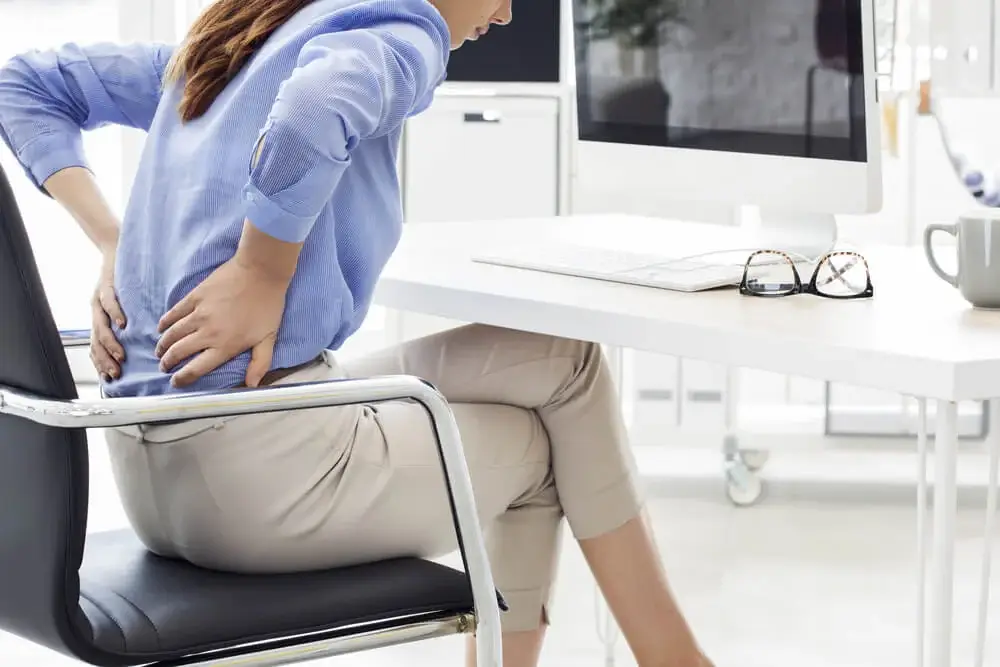
Back pain during the work
Do we realize how much time we really spend sitting in a day?
If we subtract the 8 hours of necessary sleep from the day, we have 16 hours left to spend awake. Let’s look at a fictional but quite realistic example: in the morning we drive to work for half an hour, then we sit there for 8 hours. During this time, we walk to the cafeteria for a lunch break and get up a few times to go to the toilet or for coffee, but nothing more than that.
Then we drive back home for half an hour. We have 7 hours left if there were no traffic jams. We spend some time in the day preparing meals and eating. Let’s deduct another hour or so that we spend on personal hygiene. We have a good 4 hours left. If we have children or take care of other family members, we will probably spend most of this time with them. Maybe we’ll take some time for a hobby. Do we have to sit down for this one? Maybe we also take time to relax in front of the TV or read a book.
Maybe we’ll also browse the news on our phones while sitting down. Or we are one of those people who like to exercise and will even take an hour for an organized exercise, go for a walk or do some other physical recreation. Excellent! But still, we spent a total of around 11 hours in a sitting position (4). One hour of exercise a day will benefit us greatly, but it will not completely cancel out the negative effects brought on by cycles of several hours of continuous sitting.
What is happening to the body during prolonged sitting?
While we are sitting, the musculoskeletal system is adapting. There is an increased load on the musculoskeletal structures of the back, neck, shoulders and wrists, which are also the most frequently affected joints because of prolonged sitting (2). Because of the closed position, we also increase the pressure on the internal organs. Due to the hunched position of the body, we do not allow the most important respiratory muscle, the diaphragm, to move optimally, which can lead to problems with the respiratory system. Venous pressure also increases while sitting, which puts a strain on the feet and shins.
Researchers who published a meta-analysis of 47 studies in 2015 found that increased sitting time is strongly associated with cardiovascular diseases, high blood pressure, respiratory diseases, cancer and type II diabetes. Due to an increase in the level of the hormone leptin, the risk of developing obesity also increases. In addition, due to the decrease in bone and muscle mass, while at the same time the increase in the proportion of fat, we have a strong influence on the increased occurrence of musculoskeletal diseases (2).

Correct posture while sitting at the workplace
Common diagnoses due to sedentary lifestyle
Which diagnoses related to a sedentary lifestyle are most often encountered in the Medicofit clinic?
Very often, clients come to our clinic who, due to their sedentary lifestyle, have problems with back pain, which represent a huge burden both for the individual and for society as a whole. This type of pain is often chronic and severely limits the individual’s functional ability. Carpal tunnel syndrome is also a big problem for office workers. In the final stages and in the case of severe defects, it is treated operatively, and rehabilitation takes at least 3-4 months. We also often meet individuals with pain in the neck and shoulder girdle. The prevalence of neck pain among sedentary workers is between 42-63% and is significantly higher compared to non-sedentary workers.
How does Medicofit Clinic work with other companies?
Since the establishment of Medicofit Clinic in February 2021, our clinic has been supporting companies in regard to their employees’ health. Medicofit Clinic works as a contract partner and provides healthcare services for employees. At Medicofit Clinic, we offer:
- injury rehabilitation business packages,
- personal training business packages,
- a diagnostic test in case of pain or injury within 24 hours,
- other services from the list within 24 hours,
- arrangement of an appointment with an orthopaedic specialist or diagnostic MRI in case of injury.
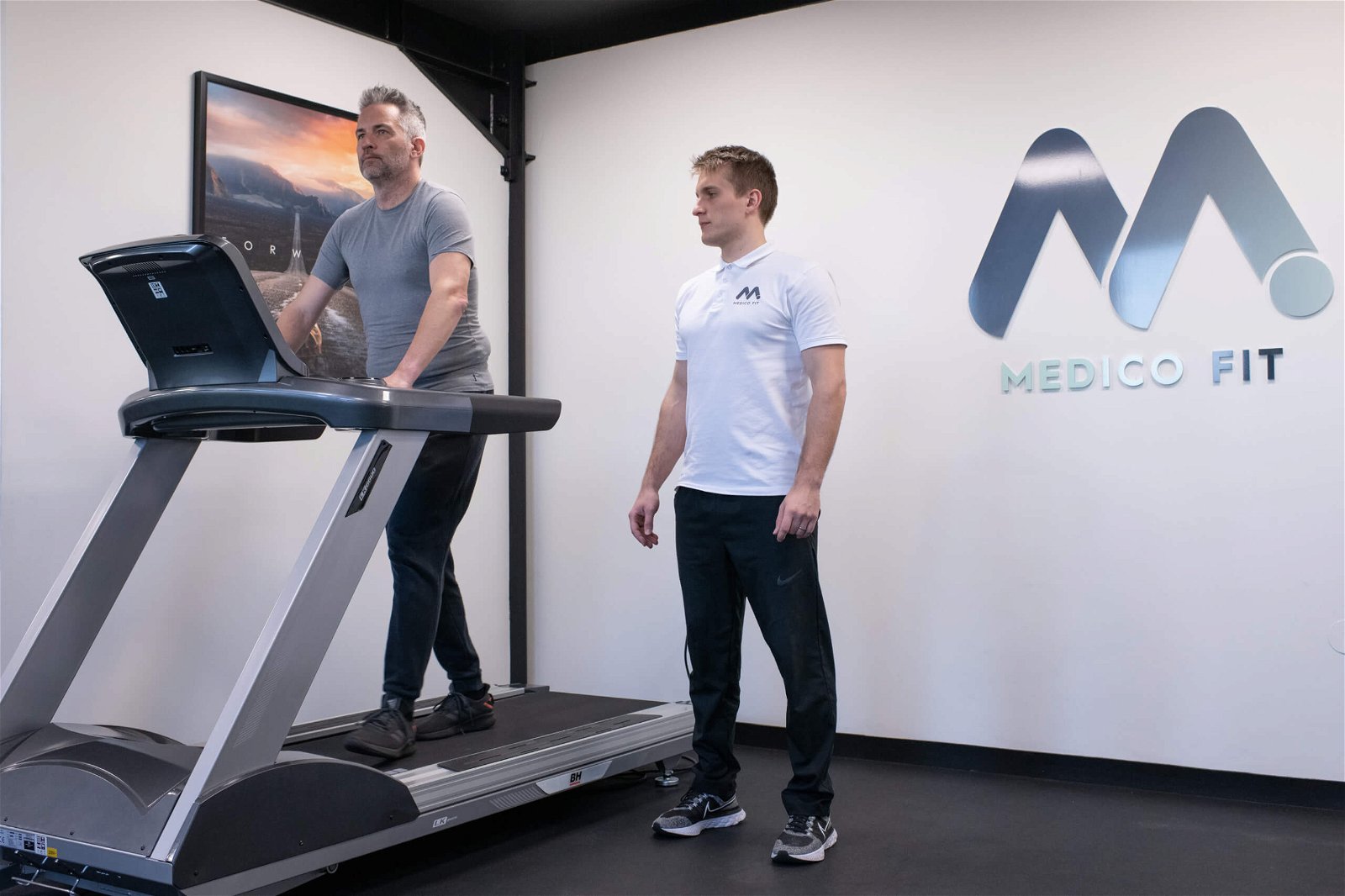
Personal training at Medicofit Clinic for our partners’ employees
Employees of Medicofit Clinic see education as a highly important factor in an individual’s treatment. Physical therapists and kinesiologists treating you will try to properly explain the condition, what caused it, as well as teach and empower you for a healthier, pain-free life.
We understand that even if we invest 100% in each individual coming to the clinic, it may not be enough if, in their own time, they do nothing to contribute to their well-being, as well as to their better physical condition. What adjustments can a person with sedentary work make in terms of moving around?
It is important to make adjustments to your workspace
In practice, physical therapists and kinesiologists often face the question of how to make adjustments to the workspace and what type of chair is best for work. The answer to this question is that it all depends on the specific tasks you perform. Overall, a good chair increases one’s stability and thus provides the basis for muscle relaxation.
The backrest is high, tilted back slightly, and provides lumbar support. A good chair has lateral stabilizers and a slip-resistant seat as well. It has to provide neutral joint position – in the case of upper limbs, this can be achieved with armrests. Resting the forearm reduces the strain on the shoulder muscles, which are often too tense. Good padding and the very shape of the chair (7) ensure comfort which is important as well.
While sitting for longer periods of time, it is important to take pressure off the spine and to interrupt the sitting time with an activity.
The importance of interrupting prolonged sitting with an activity
Try to keep your sitting time to a minimum. At Medicofit Clinic, we promote moving around. Only regular interruptions of sedentary behaviour can ease the problems. The human body was made to move! This article focuses on sitting, however, any static posture, including prolonged standing, comes with risks.
Incorporate microbreaks and active breaks into your workday. Start slow and steady. If you have been physically inactive so far and want to make a change, even taking baby steps will lead to big results. Microbreaks are short breaks, where you change position for 30 seconds after starting to feel discomfort. This is likely to happen every 20 minutes. The goal is to reduce the acute effects of prolonged sitting, poor posture or heavy work. An active break, however, is a little longer as it lasts for 5 minutes. It helps to speed up blood circulation, activate or relax the muscles, and it should certainly be in tune with you and the specifics of your work (5).
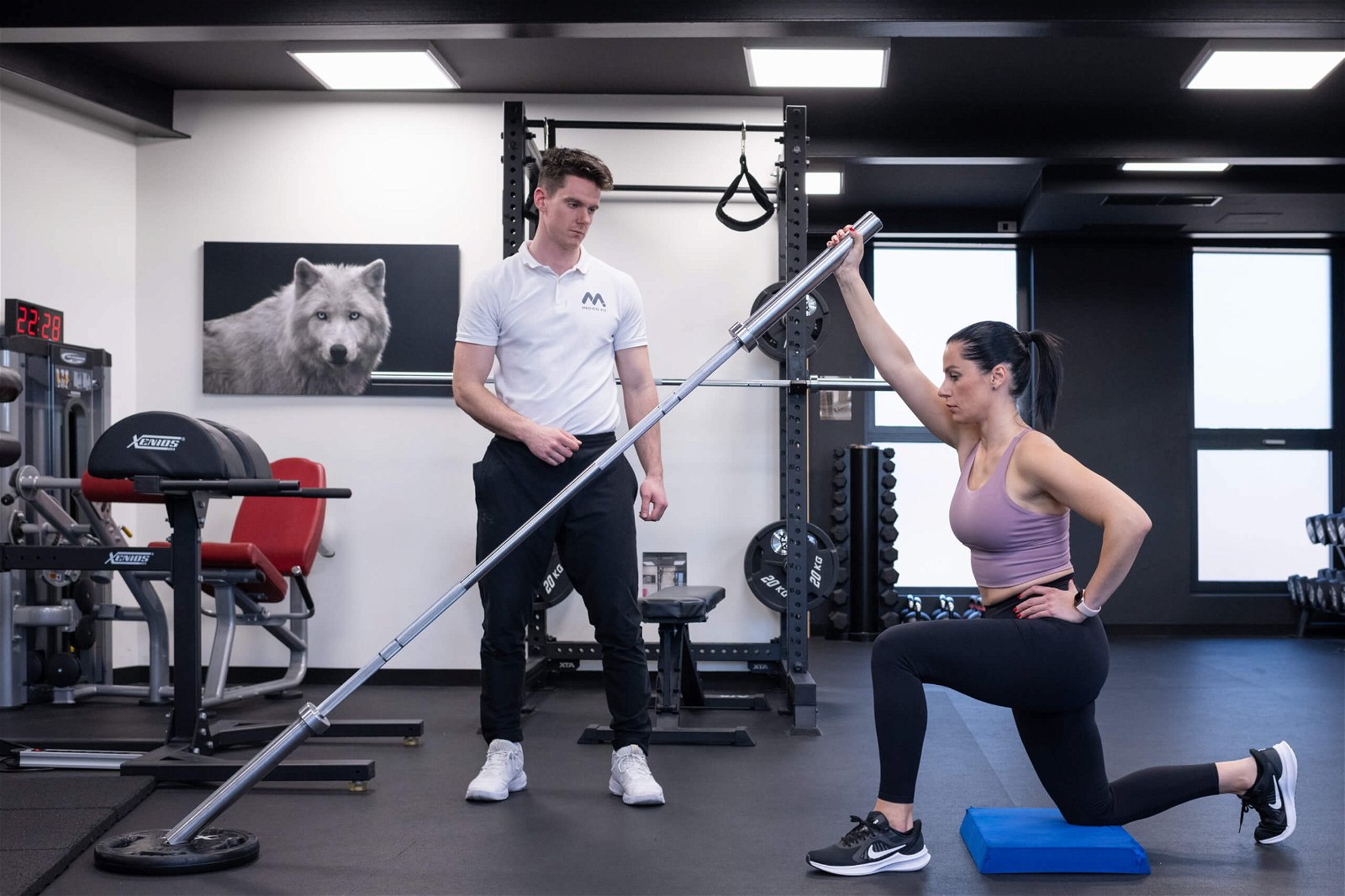
Preventive personal strength training at Medicofit Clinic. It is important to keep going!
The results will be visible only if you keep exercising regularly. The study where guided exercise with employees was carried out for a year showed that an hour of supervised exercise once a week, paired with a 30-minute stand-alone physical activity performed six days a week, had a significant positive impact on muscle strength and reduction of musculoskeletal pain.
However, the results apply only to those who attended at least 70% of all training units (5). It will be much easier to adapt new exercise habits if you are not doing it alone. Find colleagues or family members to encourage and motivate each other.
In conclusion
Sufficient physical activity reduces all-cause mortality, prevents or eases the course of chronic diseases, preserves and strengthens functional capacity, has a significant impact on mental and cognitive health, all leading to a better quality of life. At Medicofit Clinic, we are convinced that enough exercise is a major factor in establishing a quality life.
Therefore, we offer companies rehabilitation and exercise business packages, thus supporting the health of each employee. Every step of the way, we teach and encourage individuals to start incorporating at least some change into their everyday life, as even doing as little as this will have an extremely beneficial effect on the general well-being.
References:
- Ammar A, Brach M, Trabelsi K, et al. Effects of COVID‐19 home confinement on eating behaviour and physical activity: Results of the ECLB‐COVID19 International Online Survey. Nutrients. 2020;12(6):1583.
- Aviroop B, I. Oh P, Faulkner E.G, Bajaj R.R, Silver M.A., Mitchell M.S., Alter D.A., 2015. Sedentary Time and Its Association With Risk for Disease Incidence, Mortality, and Hospitalization in Adults: A systematic Review and Meta-analysis. https://doi.org/10.7326/M14-1651
- Backović Juričan A, Poličnik R, Zupančič Tisovec B. Prehranjevalne, gibalne in spalne navade odraslih Slovencev med prvim valom epidemije Covid-19: izbrani rezultati nacionalne raziskave Z zdravjem povezan vedenjski slog 2020. V: Pesjak K (ur.), Mlakar S (ur.). 14. mednarodna znanstvena konferenca Povezovanje zdravstvenih ved skozi teorijo in prakso za znanstveni razvoj in napredek zdravstvenih strok ter dobrobit uporabnikov: zbornik predavanj z recenzijo: 10. junij 2021)
- Chu AH, Ng SH, Tan CS, Win AM, Koh D, Müller-Riemenschneider F. A systematic review and meta-analysis of workplace intervention strategies to reduce sedentary time in white-collar workers. Obes Rev. 2016 May;17(5):467-81.
- Dalager T, Justesen JB, Sjøgaard G. Intelligent Physical Exercise Training in a Workplace Setting Improves Muscle Strength and Musculoskeletal Pain: A Randomized Controlled Trial. Biomed Res Int. 2017;2017:7914134.
- Guthold R, Stevens GA, Riley LM, Bull FC. Worldwide trends in insufficient physical activity from 2001 to 2016: A pooled analysis of 358 population‐based surveys with 1·9 million participants. Lancet Glob Health. 2018; 6(10): e1077-86.ž
- Harrison DD, Harrison SO, Croft AC, Harrison DE, Troyanovich SJ. Sitting biomechanics part I: review of the literature. J Manipulative Physiol Ther. 1999 Nov-Dec;22(9):594-609. doi: 10.1016/s0161-4754(99)70020-5.
